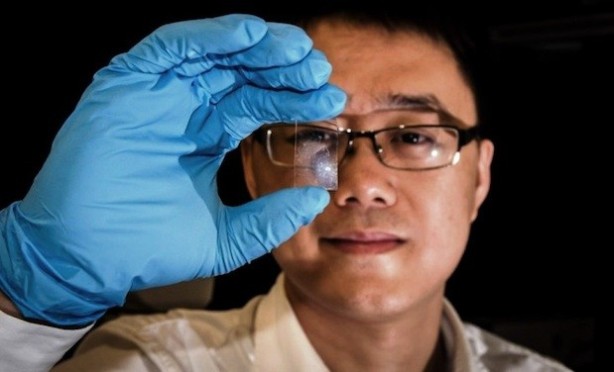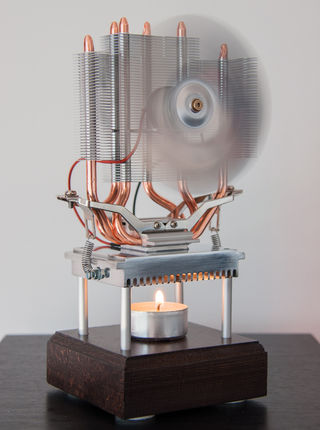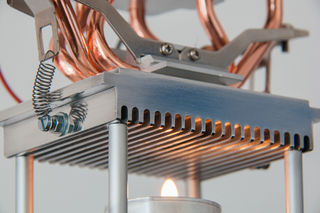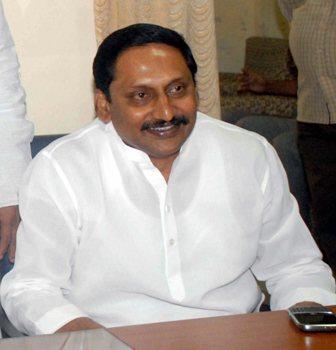Graphene camera sensors said to be 1,000 times more sensitive to light
Posted: July 3, 2013 in technologyTags: smart new technology
Thermoelectric Fan Powered by a Candle
Posted: July 3, 2013 in technicalTags: electrical engineering, electricals, electronics
TCS Walk-in Drive For 2012 Batch Freshers On 8th and 9th Feb 2013
Posted: February 6, 2013 in jobsTags: tata companies, tata educations, tata histry.http://www.allindiajobs.in/2013/02/tcs-walk-in-drive-for-2012-batch.htmlhttp://www.allindiajobs.in/2013/02/tcs-walk-in-drive-for-2012-batch.html, tata job links, tata profiles
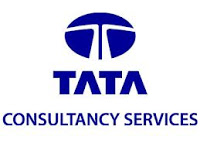 Company Name: Tata Consultancy Services Read the rest of this entry »
Company Name: Tata Consultancy Services Read the rest of this entry »
| General | 2G Network | GSM 850 / 900 / 1800 / 1900 |
|---|---|---|
| 3G Network | HSDPA 850 / 900 / 1900 / 2100 | |
| 4G Network | LTE (regional) | |
| SIM | Micro-SIM | |
| Announced | 2012, May Read the rest of this entry » |
Chief Minister Kirankumar Reddy Biography
Posted: December 29, 2012 in biographyTags: Chief Minister Kirankumar Reddy daily updates, Chief Minister Kirankumar Reddy images, Chief Minister Kirankumar Reddy information
Kiran Kumar Reddy was born on September 13, 1960 in Hyderabad to N Amarnath Reddy and Sarojamma.
He hails from a political family. His father N. Amarnath Reddy was a former Congress politician. Amarnath Reddy is often considered the political guru of former Chief Minister Nara Chandrababu Naidu. Amarnath Reddy also served as a minister in PV Narasimha Rao’s cabinet.
born 13 September 1960 is an Indian politician who has been the 16th Chief Minister of Andhra Pradesh since 2010. A four-time MLA in Andhra Pradesh, he belongs to the Indian National Congress. He was sworn in as the Chief Minister of Andhra Pradesh after Konijeti Rosaiah submitted his resignation to Governor ESL Narasimhan on 24 November 2010.
Early life
KKR was born in Hyderabad to Sarojamma and N. Amarnath Reddy, a former Congress party member and a minister in P. V. Narasimha Rao cabinet as he was considered close to late Indira Gandhi and P.V. Narsimha Rao. His family hails from Nagaripalle, near Kalikiri , Chittoor district.
He did his schooling from Hyderabad Public School and intermediate from St. Josephs’ Junior College, Hyderabad. He did his B.Com from Nizam College and LL.B from University College of Law, Osmania University. He was the captain of the Hyderabad under-22, South Zone Universities and Osmania University cricket team.
Political career
Kiran Kumar Reddy was elected to Andhra Pradesh Legislative Assembly in 1989 after his father’s death.[8] He served as member of the Public Undertakings Committee and Assurance Committee. He was elected to the state assembly from Native Vayalpadu (Valmikipuram) in 1989, 1999 and 2004. He lost in 1994 when Congress was routed in Chittoor district. He won from Pileru in 2009 after Valmikipuram got merged into Pileru constituency under delimitation. A known YSR loyalist, he was the Congress government chief whip for five years from 2004, before he was made the speaker.
Kiran Kumar Reddy was unanimously elected as Speaker of the 13th Andhra Pradesh Assembly in June 2009. His name for the speaker’s post was proposed by erstwhile chief minister YS Rajasekhara Reddy,Praja Rajyam Party chief Chiranjeevi, AIMIM floor leader Akbaruddin Owaisi, Agriculture minister N. Raghuveera Reddy and two other independents.
As Chief Minister
Kiran Kumar Reddy was chosen to be the new Chief Minister of Andhra Pradesh after incumbent K Rosaiah resigned citing personal reasons, by the Congress Legislature Party and authorised party 2 010
Education
Kiran Kumar Reddy did his schooling in Hyderabad Public School in Hyderabad. He studied Intermediate in St. Josephs’ Junior College and later did his Bachelors in Commerce from Nizam College. He did LL.B from University College of Law at the Osmania University.
Kiran Kumar has a keen interest in sports. He was a former first class player and played cricket for the Hyderabad team in Ranji matches. He was the captain of the South Zone under-22 team, Hyderabad under-25 team and the Osmania University cricket team.
Family
Kiran Kumar Reddy is married to Radhika Reddy. They have a son Nikhilesh Reddy and a daughter Niharika Reddy.
Professional Biography
Kiran Kumar Reddy is a four time MLA.
After the death of his father in 1989, Kiran Kumar Reddy was elected to the Assembly from Vayalpad (Valmikipuram) constituency. He lost in the 1994 elections, but won in the subsequent 1999, 2004 and 2009 elections. Kiran Kumar became the Congress Chief Whip in 2004 and later became the Speaker of the Andhra Pradesh Legislative Assembly in 2009. Despite being a four time MLA, Kiran Kumar never served as a minister.
16th Chief Minister of Andhra Pradesh
Kiran Kumar Reddy was chosen to be the 16th Chief Minister of Andhra Pradesh when Rosaiah resigned on November 24, 2010. In a CLP meeting on the same day, the Congress Legislature Party authorized party chief Sonia Gandhi to choose Rosaiah’s successor, who named Kiran Kumar Reddy. Kiran Kumar took oath as Chief Minister on November 25, 2010.
Successfully defeats the no-confidence motion
In December 2011, the Kiran Kumar Reddy faced a no-trust motion. Opposition party leader N Chandrababu Naidu moved the motion which was accepted after a couple of days of uproar in the Winter session of the assembly on December 3, 2011.
The no-trust motion was moved on the claim that the Kiran Kumar Reddy’s Government hasn’t come to the aid of farmers who are facing a lot of problems due to drought situation. A debate on the motion was held for two days and the voting finally took place on December 5, 2011. Despite a lot of support from opposition parties to the no-trust motion, the Government was able to successfully defeat it with the help of its allies Praja Rajyam Party and the MIM. The no-confidence motion was defeated 160-122.
2012
December 11, 2012: Five Telangana Congress MPs submitted a privilege notice to Lok Sabha Speaker Meira Kumar seeking action against Kiran Kumar Reddy for refusing to meet the seven Lok Sabha MPs on the day of Telangana March on September 30, 2012.
The privilege notice was submitted by Manda Jagannatham, Madhu Yaskhi Goud, Ponnam Prabhakar, S Rajaiah and G Vivek on behalf of the seven MPs.
2011
February 9, 2011: Chief Minister Kiran Kumar Reddy to participate in Rachabanda in Khammam and Medak districts.
February 6, 2011: Kiran Kumar Reddy welcomes the Praja Rajyam Party merger with Congress.
February 5, 2011: Kiran Kumar meets with leaders of Telangana Joint Action Committee.
February 3, 2011: Chief Minister Kiran Kumar participates in Rachabanda in West Godavari and Krishna districts.
February 2, 2011: Kaka’s comments on AICC President Sonia Gandhi unfortunate, says Kiran Kumar.
2010
December 25, 2010: Chief Minister Kiran Kumar Reddy says Government is committed to help farmers in the state.
December 24, 2010: Kiran Kumar Reddy welcomes President Pratibha Patil in Hyderabad. Leaves to Tirupati in the evening on a two day trip.
December 23, 2010: All party meeting convened by Kiran Kumar on the farmers’ problems fail.
December 21, 2010: Kiran Kumar reaches Hyderabad in the night after attending the Congress Plenary meeting in New Delhi.
December 17, 2010: Meets Rajya Sabha MP Brinda Karat in Hyderabad. Promises welfare programs to the physically disabled in the state.
December 16, 2010: Kiran Kumar meets the members of the Sri Krishna Committee who are on their final official trip to the city before submitted their report to the central government.
December 14, 2010: Kiran Kumar inaugurates India Open Grand Prix international tournament in Hyderabad.
December 13, 2010: Kiran Kumar Reddy promises that peace will prevail in the state after December 31, 2010. He speaks at the Assembly and says that the responsibility to maintain law and order in the state lies with the Government.
December 12, 2010: Kiran Kumar meets Tadipatri MLA JC Diwakar Reddy for the first time after the MLA lost a place in the cabinet in the last minute.
December 11, 2010: CM meets with ministers from Telangana regions. He promises that the Government will lift away the cases against students from Telangana regions who took part in the Telangana movement.
December 9, 2010: Kiran Kumar does an aerial survey on the damage caused to the farmers crops in Guntur. Promises to send a team to Delhi to request the Central Government to assess the damage.
December 8, 2010: Kiran Kumar Reddy meets CPM State Secretary Raghavulu and senior CPM leader Madhu. He receives a letter from them on the important problems in the state.
December 7, 2010: Kiran Kumar enquires about the incessant rains in the state via teleconference from New Delhi. Appoints officials to monitor the situation in the state.
December 6, 2010: Kiran Kumar garlands the statue of B R Ambedkar at Basheerbagh, Hyderabad. Leaves to Delhi in the evening to discuss about post of Deputy CM, Speaker etc. with Sonia Gandhi.
December 5, 2010: CM goes on his first official trip to Rangareddy. Addresses a huge gathering at Tandoor. Inaugurates two electricity substations and development programs.
December 4, 2010: Kiran meets with founders of ‘Jagan Yuvasena’. Asks party workers to be loyal.
December 3, 2010: Kiran Kumar Reddy speaks on the occasion of International Day of Persons with Disabilities at the Harihara Kala Bhavan in Hyderabad. Assures Government’s support to the disabled.
December 2, 2010: Kiran Kumar successfully pacifies the ‘unhappy’ ministers. He holds his first cabinet meeting in the evening.
December 1, 2010: Kiran Kumar Reddy sends the list of his cabinet ministers to Governor ESL Narasimhan. He enters his new office at the Secretariat at 9:52 in the am. KKR’s Cabinet Ministers take oath at Raj Bhavan. Vatti Vasanth Kumar resigns within 12 hours of inducting into KKR’s cabinet. Several other ministers expresses displeasure over their portfolios.
November 2010
November 30, 2010: Kiran Kumar Reddy meets former Assembly Speaker Suresh Reddy, Daggubati, Aanam and Raghuveera Reddy following Jagan’s resignation from the Congress Party.
November 29, 2010: Kiran Kumar Reddy meets Governor ESL Naramsimhan. He holds discussions with party MLAs who are within his reach.
November 28, 2010: Kiran Kumar Reddy meets Congress President Sonia Gandhi. He announces to the media that his new Cabinet will be sworn on on December 1, 2010.
November 27, 2010: Kiran Kumar Reddy meets Congress leaders in New Delhi. He says that the Deputy Chief Minister will be from Telangana region.
November 26, 2010: Kiran Kumar meets Governor ESL Narasimhan and former Chief Minister K Rosaiah. He later met IAS, IPS and IFS officials at the Lake View Guest House.
November 25, 2010: Kiran Kumar Reddy takes oath as the 16th Chief Minister of Andhra Pradesh. The oath was administered by Governor ESL Narasimhan. Kiran Kumar Reddy takes the oath in Telugu wearing a simple attire. Right after taking the oath, KKR visited the NIMS hospital. He later addressed the media to gave a brief idea on his governance will be.
November 24, 2010: Chief Minister K Rosaiah resigns citing personal reasons. Hours later, CLP Meeting was held and the decision to choose the new Chief Minister was unanimously given to Party President Sonia Gandhi. Finance Minister Pranab Mukherjee later announces that Kiran Kumar Reddy will be the new chief minister.
Upcoming Solar Power Technology How To Effec On Home
Posted: December 29, 2012 in technologyTags: solar energy work., solar images, solar new technology, solar panels, solar plates
If you don’t know much about solar technology , it’s helpful to learn the basics. This technology is very practical. Solar is a very efficient power system, and the uses for solar are endless. Wherever you need power, solar can provide it.
Solar cells- How they work:-
Converting solar energy into usable electricity is a simple process which has been around for several decades. The silicon based cells, which make up a solar panel, convert sunlight into electricity through a process known as the ‘photovoltaic effect’.
The ‘photovoltaic effect’ is a process in which ‘photons’ from the sun are absorbed and transferred to an external source (like your light globes) by your solar panels.
The amount of power your solar panels produce will vary depending on the number, configuration and orientation of the cells and the temperature and intensity of the sunlight they are exposed to.
Solar panels- How they connect and what they can do:-
Solar Cells are arranged into panels that are sized for a particular power output.
When photons collide with the cells, they excite electrons on the surface that shake loose and start a flow of electrons, or direct current (DC electricity) to an external source.
In most cases solar panels are usually mounted on the roof of houses, sheds or garages, but they can also be installed directly onto the ground. Solar panels should be installed in the area that is exposed to the most sunlight.
A most ideal location for a solar panel is a north-facing roof inclined at 30 – 35 degrees. Having said that an orientation within 45 degrees east or west of that will only have marginal differences in the amount of power a solar panel produces.
Education Futer Devalopments
Posted: December 29, 2012 in educationTags: education achivments, education collages, education fueture plans, education inages, education news, education peoples
Many ways of success implementation:-
Leadership must provide active and committed support — financial, logistical, and moral.
1 ) A technology program is only going to succeed when school boards, school superintendents, and school principals commit to it in word and deed. That support would take the form of practical allocations in terms of all necessary release time and training for teachers and administrators.
The best leadership must work to supply and maintain an “appropriate environment” that will function as fertile ground for educationally sound outcomes. The teacher is a member of the leadership team too, and should be equally committed to technology-integrated education.
2) Selling is better than telling. Everyone needs to buy into the change that technology brings.
The best leadership establishes an environment in which expected outcomes occur spontaneously. Technology should never be forced on teachers; its use should never come as a mandate from on high.
Teachers must be given the opportunity to prepare for the kind of change that computer-based technology brings. The best leadership therefore enables teachers to become the best that they can be through consultation, collaboration, communication, support, respect, and encouragement.
3) Invest in, and train, a core team of teacher-computerizes.
Teacher-computerizes are men and women who are committed to using computer-based educational technology, and who have been given the opportunity to gain a sufficiently high level of expertise to qualify them to act as role models, advisers, and trouble shooters in matters having to do with computer-based educational technology.
In every school, there should be one or more teacher-computerizes, the number depending on the size of the school and, of course, on the school’s commitment to educational computing.
